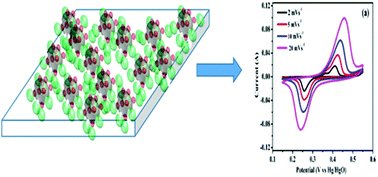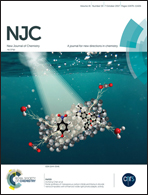Enhanced performances of functionalized XC-72 supported Ni(OH)2 composites for supercapacitors
Abstract
Functionalized XC-72 (f-XC-72) was obtained by introducing oxygen-containing groups into a concentrated nitric acid and sulfuric acid mixture. Ni(OH)2 particles were intended to be anchored firmly by the oxygen-containing groups on the f-XC-72, enhancing the supercapacitive performance of Ni(OH)2/XC-72. Ni(OH)2-based composite was synthesized using a microwave-assisted heating method. Compared to Ni(OH)2/XC-72, the specific capacitance of Ni(OH)2/f-XC-72 composite increased from 1250 to 1381 F g−1 at 2 mV s−1 by cyclic voltammetry, and from 1378 to 1596 F g−1 at 1 A g−1 by galvanostatic discharge. Furthermore, the rate capability (scan rate from 2 to 20 mV s−1) increased from 73.4% to 82.5% and the capacitance retention increased from 72.3% to 84.5% after 1000 cycles at 100 mV s−1. An AC//Ni(OH)2/f-XC-72 asymmetric supercapacitor (ASC) also delivered a higher specific capacitance (102 F g−1 at 0.5 A g−1) and maximum energy density (48 W h kg−1 at 522 W kg−1), and a better cycling stability (91.3% capacitance retention after 1000 cycles at 10 A g−1) than AC//Ni(OH)2/XC-72. The Ni(OH)2/f-XC-72 composite exhibited high specific capacitances, good rate capability, and excellent cycle stability, which sets a precedent for low-cost high-performance energy storage devices.



 Please wait while we load your content...
Please wait while we load your content...